Search for:
Incorrectly linked failures
Explanation:
Failure links will be searched for, which consist of failures anchored at structure elements (SE), which are either located on the same or on a directly adjacent structural level.
The additional condition for directly adjacent SE is that there is no structural connection between these SE.
Example:
Abbreviations:
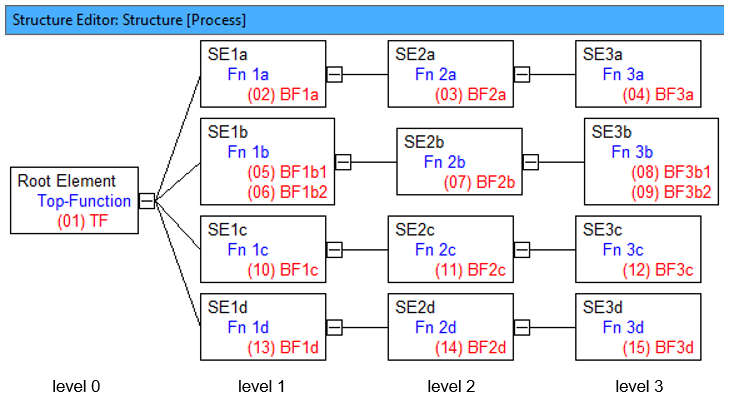
- The above structure consists of 13 SE distributed over four structural levels 0,1 ,2, and 3. Each SE is assigned a function and each function is assigned at least one failure. All names of failures have a different number at the beginning. That is intended help improve the recognition of failures in the following figures.
- The relation of the involved SE within the structure is decisive for the search result of the Quality Rule (QR). Therefore, it is important to know the meaning of directly adjacent structural levels are and of structural connections between SE:
In the shown structure, level 2 is of course directly adjacent to levels 1 and 3 but level 1 is NOT directly adjacent to level 3. There is for example a structural connection between the directly adjacent structure elements SE1a and SE2a whereas such a connection is missing between SE1a and SE2b. Knowing about directly adjacent structural levels and about structural connections is important for the interpretation of the QR search result.
- The discussed QR searches for failure links consisting of special assignments to the system structure. To explain these special assignments the following case examples will show different failure links using the sample structure represented above. As such failure links always consist of at least two failures a positive search result of the QR will include at least two failures as well.
Case example 1:
The explanation of the QR (see above) says, on the one hand, that the QR searches for failure links which consist of failures the SE of which are located on the same structural level. The following figures of Structure Editor and Failure Net Editor show three examples. The direction of the failure link is always irrelevant for the search result:
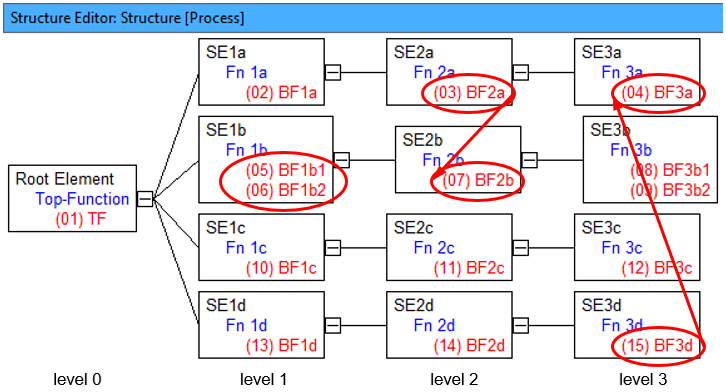

Search result case example 1: 
Applying the discussed QR to the three failure links given above, the search result is as follows:
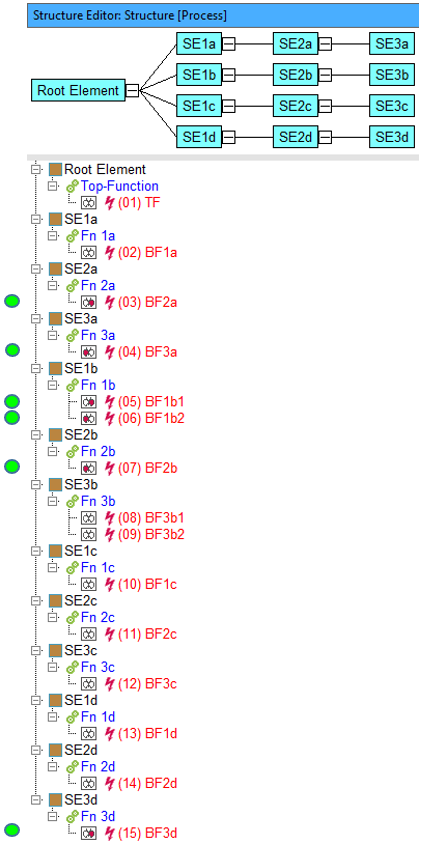
As expected, six failures are found which form the three failure links that meet the filter criteria of the QR, because each of the failure links consist of failures anchored at SE on the same structural level:
(05) BF1b1 and (06) BF1b2, (03) BF2a and (07) BF2b as well as (15) BF3d and (04) BF3a.
Case example 2:
The explanation of the QR says, on the other hand, that the QR searches for such failure links that consist of failures the SE of which are located on directly adjacent structural levels. For directly adjacent SEs, it must also be true that no structural connection exists between these SEs.
Given the following two failure links, which involve only directly adjacent SE, the influence of the structural connection on the search result becomes clear.
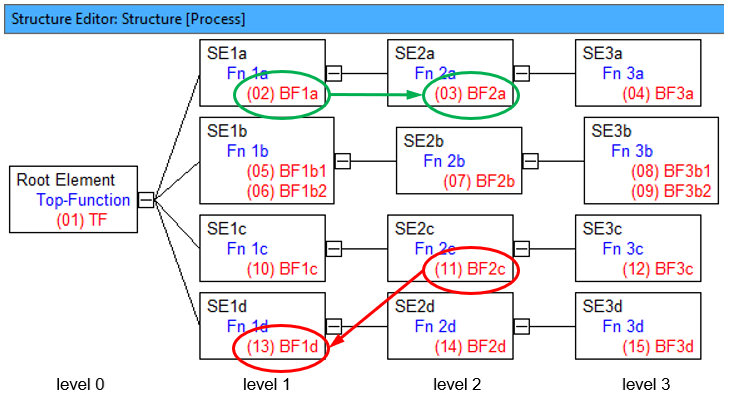

Search result case example 2: 
Applying the discussed QR to the two failure links given above, the search result is as follows:
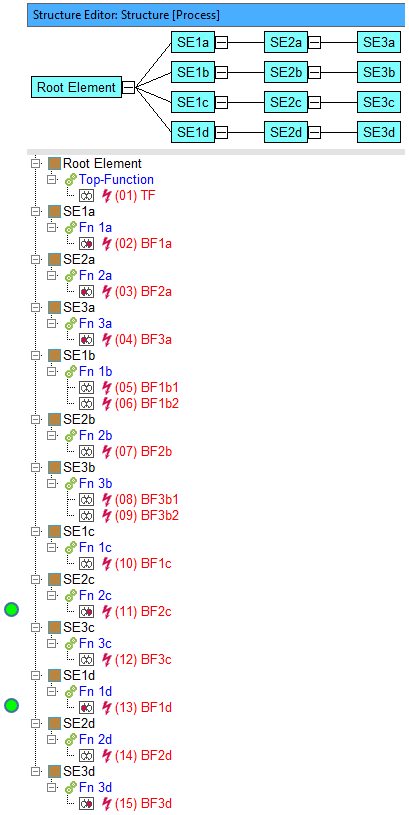
As SE1a and SE2a are located on directly adjacent levels and share a structural connection, the failure link made by both failures belonging to SE1a and SE2a is not part of the search result. In contrast, the failures that form the failure link belonging to SE2c and SE1d are included in the search result, because SE2c and SE1d do not share a structural connection even if they are located on directly adjacent levels.
Thus, (11) BF2c and (13) BF1d are included as hits in the search result.
Case example 3:
In addition to case example 2, the following case example 3 demonstrates that failure links that are not formed between directly adjacent levels do not influence the search result.
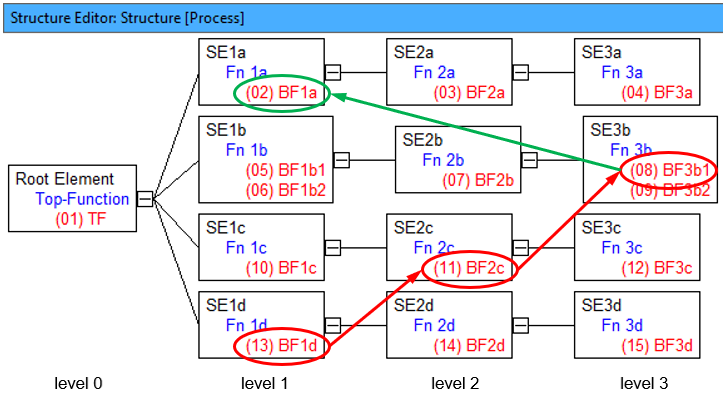

Search result case example 3: 
Applying the discussed QR to the failure net made of three failure links given above, three hits are listed in the search result:
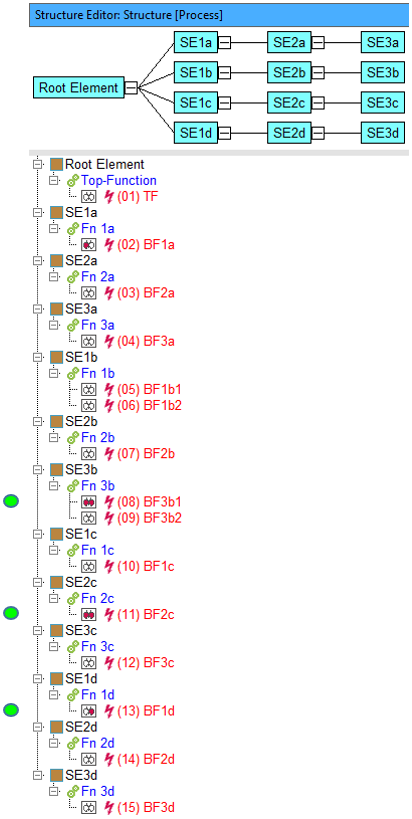
Because the match conditions described in case example 2 already apply to the failure links (13) BF1d <–> (11) BF2c and (11) BF2c <–> (08) BF3b1, the failures (13) BF1d, (11) BF2c and (08) BF3b1 will be listed in the QR search result. In that case, (11) BF2c which is marked only once represents a “double hit” as this failure is part of two failure links which are relevant to the QR. You can recognize that visually in the failure net where the failure has two different failure link lines.
The failure link (08) BF3b1 <–> (02) BF1a does not meet the QR search condition, because the involved SE are not located on directly adjacent levels.
Case example 4:
In that deliberately complex case example, all failures of the sample structure are linked to a shared net in the following way as shown by the failure graph and the failure net in the following:
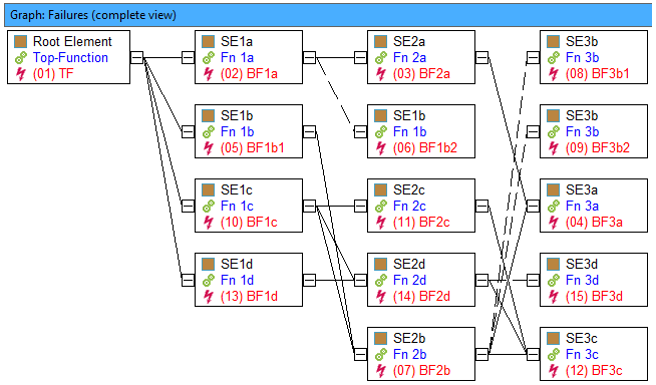
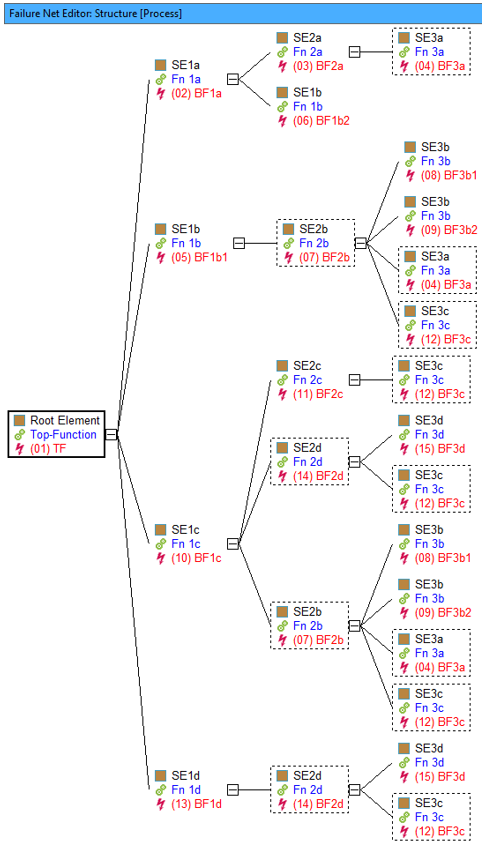
It is not obvious at first when analyzing the failure graph and failure net which failure links meet the conditions of the discussed Quality Rule and were marked as hits when applying the QR.
If we add – like in the previous examples – all existing failure links to the failure structure the following figure is the result for case example 4:
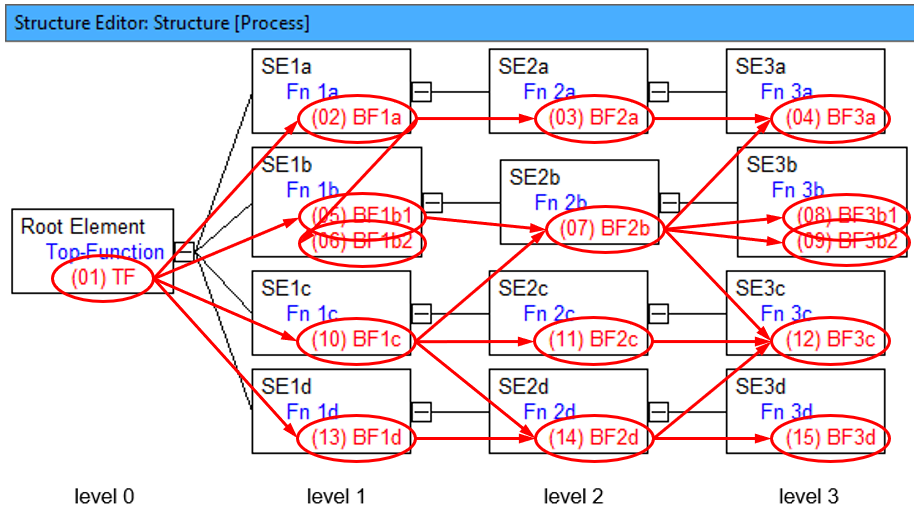
The QR search run produces the following seven failures which result in failure links matching the QR search conditions:
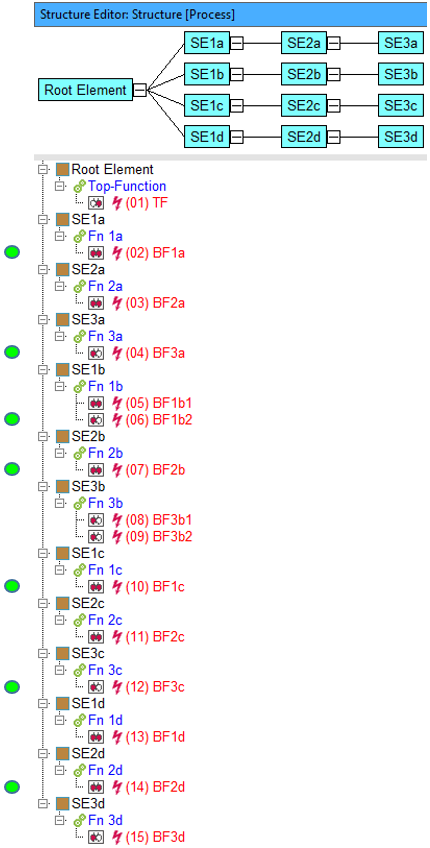
If we remove all failure links that are not part of the QR search result from the marks present in the above figure – in our case (01) TF, (03) BF2a, (05) BF1b1, (08) BF3b1, (09) BF3b2, (11) BF2c, (13) BF1d und (15) BF3d – only those failure links will remain that meet the QR search condition. The following figure shows the result:
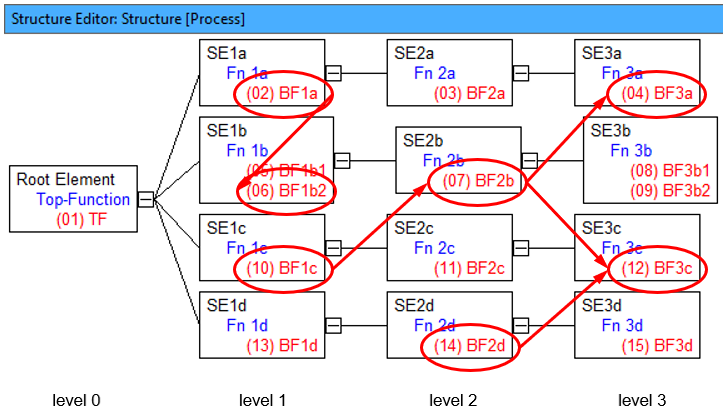
Instead of going the previously described way, you may of course in a first step mark all failures found in the QR search run and then in a second step apply your knowledge about the failure links from the failure graph or failure net to mark the failure links in the failure structure that match the QR search result. The result then is that all failure links are shown in the same way as in the previous figure.
Search result case example 4: 
Thus, the seven failures (02) BF1a, (04) BF3a, (06) BF1b2, (07) BF2b, (10) BF1c, (12) BF3c and (14) BF2d are recognized and marked as failures which form the failure links (02) BF1a <–> (06) BF1b2, (10) BF1c <–> (07) BF2b, (07) BF2b <–> (04) BF3a, (07) BF2b <–> (12) BF3c, (10) BF1c <–> (14) BF2d and (14) BF2d <–> (12) BF3c that satisfy the search condition of the QR.
Looking at the number of failure link lines, as we did in case example 3, between the individual failures, we conclude that the three failures (10) BF1c, (12) BF3c and (14) BF2d are “double hits”, because they form two relevant failure links with two other failures. As (07) BF2b even forms three failure links with three failures matching the QR search result that failure is a “triple hit”.
Final remark:
The discussed QR searches for failure links with certain characteristic but cannot show the failure links itself in the search result but only the failures that form the relevant failure link (February 2022).
If the search result includes more than two failures the IQ user has to use the failure graph or the failure net to identify the relevant failure links.


